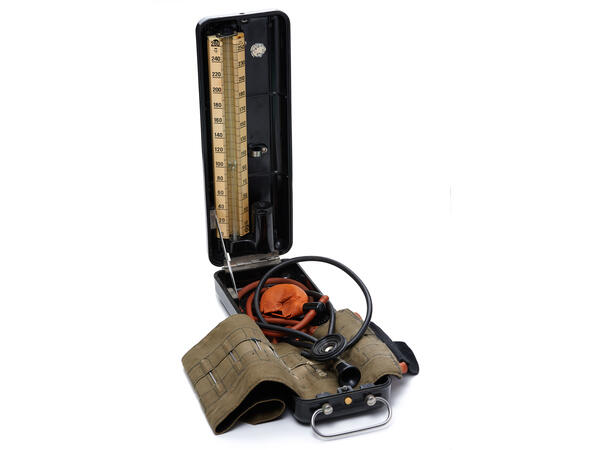A tonometer or sphygmomanometer is a device designed to measure blood pressure. It consists of a pressure gauge that measures air pressure, a cuff that is put on the patient’s arm, and an air blower with an adjustable release valve.
For the first time in 1856, human blood pressure was taken by the surgeon Peter Anton Favre during an operation to remove the hip. He found that the blood pressure in the femoral artery is 120 millimeters of mercury. This was an exceptional case: it is dangerous to take the blood pressure of patients by opening an artery.
In 1881, the Austrian doctor Samuel von Basch used a rubber tank filled with water to squeeze the artery until the pulse disappeared. The tank was connected to a mercury pressure gauge, and the artery stopped pulsating at an external pressure that corresponded to the systolic, upper arterial pressure. In 1896, the Italian doctor Scipione Riva-Rocci proposed using an inflatable cuff instead of a water tank — so the tonometer acquired its present form. The only drawback of the new device was that it could only measure systolic pressure.
In 1905, a Russian surgeon NikolAi KorotkOv noticed that if external pressure was applied to the artery, sounds and noises arose in it, and they stopped as soon as the external pressure exceeded the systolic. Korotkov also noted that if one put a stethoscope over the brachial artery in the cubital fossa, one could hear sounds when the artery was pressed excessively or when blood circulation in the artery was restored. According to this method, the blood pressure level in the cuff, recorded during the first noise, showed the upper, systolic pressure. When the blood flow gradually leveled out and the sounds disappeared, the lower diastolic pressure was recorded. In 1962, the World Health Organization recommended the Korotkov method as the most appropriate for medical practice. It is still used all over the world today.



